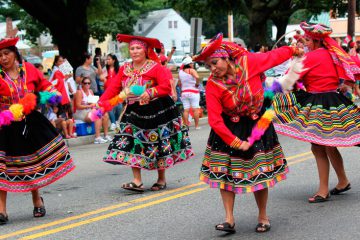This tour touches on the best of Cusco, the blend of the Inca and Colonial aquitecture and religious features meet beautifully in Cusco to give it its charm and character!
The stunning archaeological feats in building the famous Saqsayhuaman and other major Incan sites will astonish you. The stories of Pachacutec who was the initiator of many constructions here and in the Sacred Valley and so beloved by his people.
Itinerary
Koricancha and the Convent of Santo Domingo
The convent was built on the spectacular Coricancha ‘site of gold’. This was the most important temple dedicated to the worship of the Sun and whose walls were lined with solid sheets of gold. All that remains now is the fine stonework, the conquistadors took the rest. Coricancha was also an observatory, where priests kept track of major celestial events. Today it houses an impressive collection of canvas paintings from the Escuela Cusqueña.
Sacsayhuaman
Sacsayhuaman (which means ‘satisfied falcon’) is one of the most impressive sites built by the Incas. It is generally referred to as a fortress, however it is not certain what its main function was. Current research suggests that it was more likely to be used as a temple, as Inca tombs have been discovered in the area.
The site is a marvellous archaeological feat, even now after it was destroyed, one can only imagine its greatness when it stood in full glory. The stones in the wall are incredible and the largest weighs in at over 100 tonnes.
The Incas envisioned Cusco as having a puma shape – Sacsayhuaman was the head. The magnificent zigzag walls are the major attraction. The grounds surrounding Sacsayhuaman are still used today for the colourful festival of Inti Raymi which is held on the 24th June every year.
Q’enqo
The site of Q’enqo (meaning ‘zigzag’ or ‘labyrinth’) contains the most impressive carved rocks in the Cusco area. There are carvings everywhere, although some are a little indistinct: a llama, a condor and snakes have been identified. There are many zigzag channels on top of the rock, probably used for pouring sacrificial chicha (a local wine made from maize). Inside the rock there are a number of caves and passageways and an altar which was used for the sacrifices of llamas.
Puca Pucara
Puka Pukara translates to ‘the red fortress’. This is a small site and although the name suggests that it was a fortress, it does not appear to have any defensive purpose.
Tambomachay
This site was thought to have been used as a Temple to the Water. There are some very impressive aqueducts, canals and cascades carved in stone, designed to channel water flowing from a nearby stream.
Inclusions
Included:
- Private Transportation
- English Speaking Guide
Not included:
- Entrance Fee to the Qoricancha S/15.00
- You should buy the Tourist Ticket
- Official Tourist Ticket = S/ 130.00 Soles (Valid for 10 days to visit 16 sites)
- With ISIC CARD S/. 70.00 you will use the same Ticket to do Sacred Valley Partial Ticket = S/. 70.00 Soles (Valid for 1 day).














